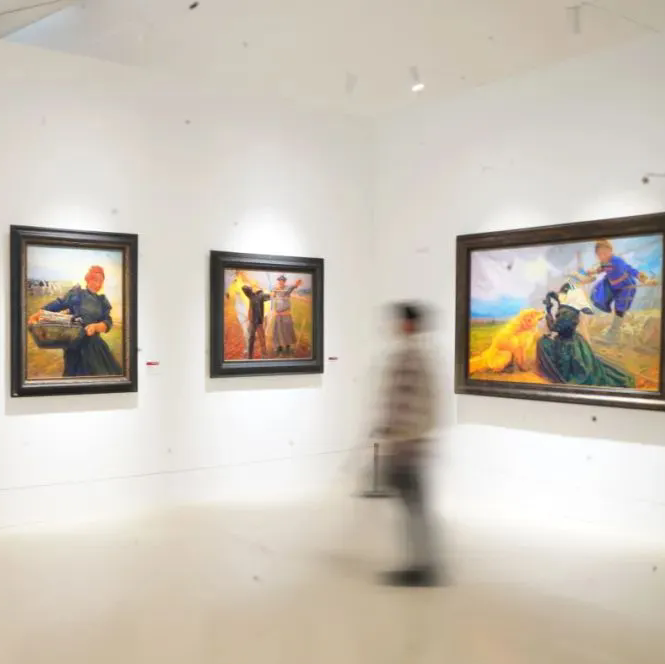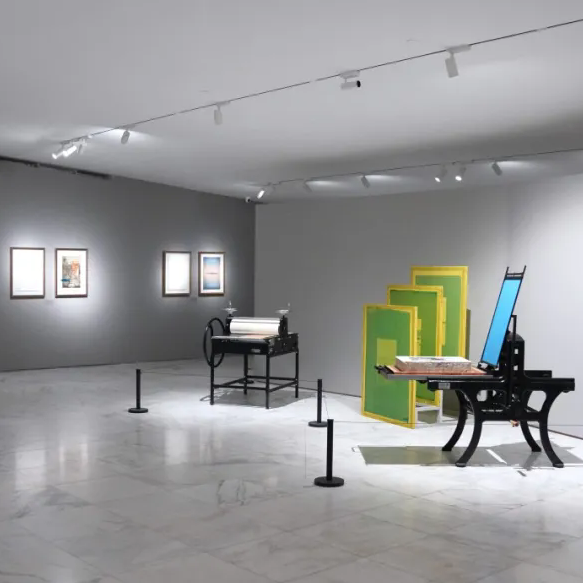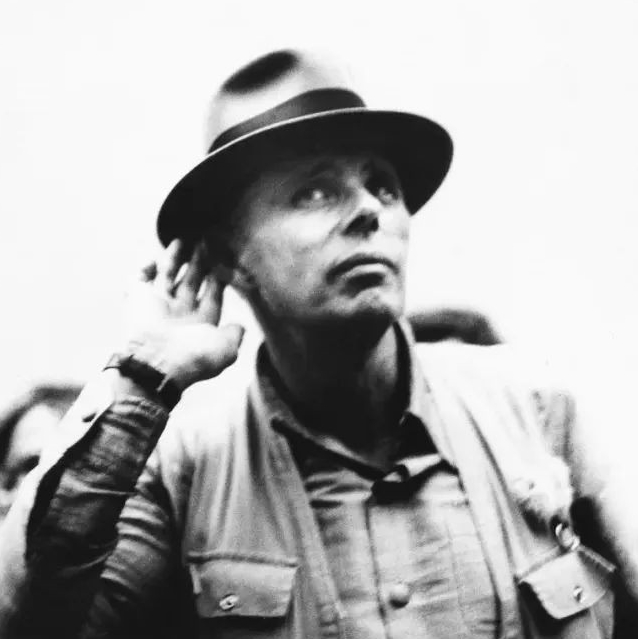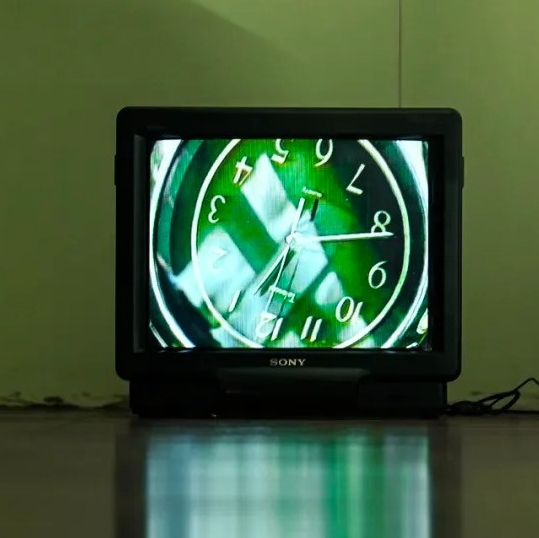
“These [the etudes] are intentionally as difficult as I can make them, because I think we’re now surrounded by very serious problem in the society, and we tend to think that the situation is hopeless and that it’s just impossible to do something that will make everything turn out properly. So I think that this music, which is almost impossible, gives an instance of the practicality of the impossible.”
— John Cage [1]
“Étude,” basic, monotonous, repetitive, boring—this is often people’s intuitive interpretation of it. In the realm of music, it is used to improve the technical skills of players; in the field of general art, it is either the repeated practicing of basic painting techniques, continuous training of fundamental dance movements, or repeated questioning and tracing of a concept. It is the origin of art diversification and the beginning of the infinite extension of ideas.
It is noticeable that the fundamentality and repetition behind “Étude” do not merely mean simplicity. Instead, it usually shows extraordinary difficulty, which implies that musicians or artists need to spend a great deal of time and energy achieving their expectations. During the process of repeated training and thinking, practitioners can apply their emotions, feelings, and reflections to the surrounding environment and society. It could eventually enable art expression to step foreword in various directions based on diversified personal experiences, social contexts, and cultural backgrounds.
Artist John Cage created Etudes Australes during the social context of the Cold War. Cage’s composition of études performed by separate hands includes many impromptu notes and aggregates, following western musical theory while combining with the southern star chart and Chinese I-Ching. Cage used such complex and unexpected difficulties behind the Etudes Australes to imply the “insoluble” social relationship. Confronting such a challenge, what kind of feedback and responses could individuals, groups, and the world give?



Exhibition View
By focusing on “Etude” as a starting point of most art creations as well as the social and political announcement behind John Cage’s Etudes Australes, curator Shen Chen presents exhibition Etudes with 12 artists in the Aranya Art Center. The exhibition attempts to respond to and build around the broader meanings that “études” carry through the works of these 12 artists drawn from vast and diverse inspiration in today’s context. [2]
Overture: Dilemma and Change in Repetition
The exhibition starts with artist Wang Haiyang’s five abstract stop-motion animations, which respectively explore the themes of rhythm and control, chaos and sensibility, time and desire, reversal and transcendence. The five topics actually implicitly illuminate the development in the content of the following exhibition.

View of Wang Haiyang's Works
"The Proof of Existence," "Seize the Moment or the Moment Seizes Me," "The Invisible Hand," "Golden Breath," "Communication"
In Wang Haiyang’s works, spectators can often see a lot of repetition, circulation and changes and rhythm under absolute control. These characteristics all seem to imply that Wang Haiyang, who graduated from the printmaking department, controls and applies the notion of “plurality.” Under the absolute and precise control of the printmaking thinking on the environment and rhythm, the artist integrates into the interpretation of different themes with more emotional life experience and emotion. Whether the white calcium tablets against the inmate with rickets in “The Proof of Existence,”or the different traces from Wang Haiyang and his father in “Communication,” or the eraser debris that represents a time scale… This series of expressions makes the set of stop motion animation work to present a life meaning and temperature under the rational prescribed trajectory.
The arrangement of this group of works is different from the exhibition “New Direction: Wang Haiyang” at the UCCA Center for Contemporary Art in 2016 displayed the five works side by side in a white cube space. In this exhibition, these five stop motion animations are placed in a dark room in different perspectives, inviting the audience to experience the series of works from different angles. The continuous transformation of perspectives also enables more abundant variation in the works.

Exhibition View

Exhibition View of "New Direction: Wang Haiyang" in UCCA Center for Contemporary Art, 2016
Photo from UCCA
Walking with the spiral space, the audience would see the second exhibition hall presenting artists Ignacio URIARTE and Liu Wentao’s research and thinking about daily office materials and basic geometric shapes.
Ignacio URIARTE, dubbed as “the office artist,” often works with office supplies due to his experience of as a white-collar worker. Therefore, in his artistic creation and philosophy, the monotonous “office supplies” and “daily routine” are always within his explorations and practices. In Liu Wentao’s works, the continuous arrangement and repetition of intricate straight lines constitute a space form as magnificent as the universe in the two-dimensional picture, presenting the interchanging between light and space to the beholder.

Exhibition View

Ignacio URIARTE
"Rubber Band Carpet"
2015
floor installation with rubber bands
variable dimensions

LIU Wentao
"Untitled"
2016
pencil on canvas
Φ200 cm
In this series of works, artists are eager for change and possibility in the expression of repetition and foundation. However, the circulated repetition also means going through a certain dilemma and chaos, which is often closely related to the predicament encountered by artists in real life. It is precisely when complicated and realistic experiences are projected in artworks that all monotonous and boring expressions can be applied to the emotional temperature. The process when the artist encounters difficulties, reflects difficulties and then expresses difficulties, enables diversified changes to occur.
Development: Re-examining the Inherent Concepts, Identities and Symbols
The following exhibition hall showcases artists Li Liao and Tong Wenmin’s reflections on the notion of “labour” in contemporary society. In Li Liao’s series of works, by practicing the “successful experience” provided by the middle class, such as accomplishing eight things every day, recitation of the third volume of New Concept English, bodybuilding, fluent English, etc., these works ironically present the stereotypical middle class’s ideal life and inherent social evaluation that oppresses each individual. Tong Wenmin’s “Factory Project” series records her devotion to regular and repetitive labour routines. Forging iron and sleeping, the compulsory factory daily schedule shows a neurotic sense of absurd drama through the continuous repetition of clips in the video.

LI Liao
"Eight Things Everyday"
2018-2019
tape, highlighters
Overall dimensions variable

TONG Wenmin
"Factory Project-Forge Iron"
2016
Performance, Chongqing Hewei Iron Crafts Factory, China
Sngle channel video (color, sound),10’00”
Iron Bar, 12×42×9 cm, 14.5×28×8 cm, 15×30.5×10 cm, 15×32×11 cm, 18×23.5×3 cm, 11×37×9.5 cm, 13×37×9.5 cm
Overall dimension variable
Courtesy Ms. LI Lin
In another hall, Zhang Zipiao and Liu Shiyuan’s works question the identity of “woman” and “mother” through an inherent understanding. In Zhang Zipiao’s paintings, different from the image of female figures in art history, she deconstructs the female body to a great extent in the picture. The faintly identifiable female nude is abstracted in a large area of colour which is very ambiguous. However, at the same time, the intimate and private angle of portrayal of the figure makes the picture full of a strong spatial impact. “Females Body,” the classic artistic creation motif expresses a delicate female emotion and the autonomy of the female as the object of viewing in Zhang Zipiao’s paintings.
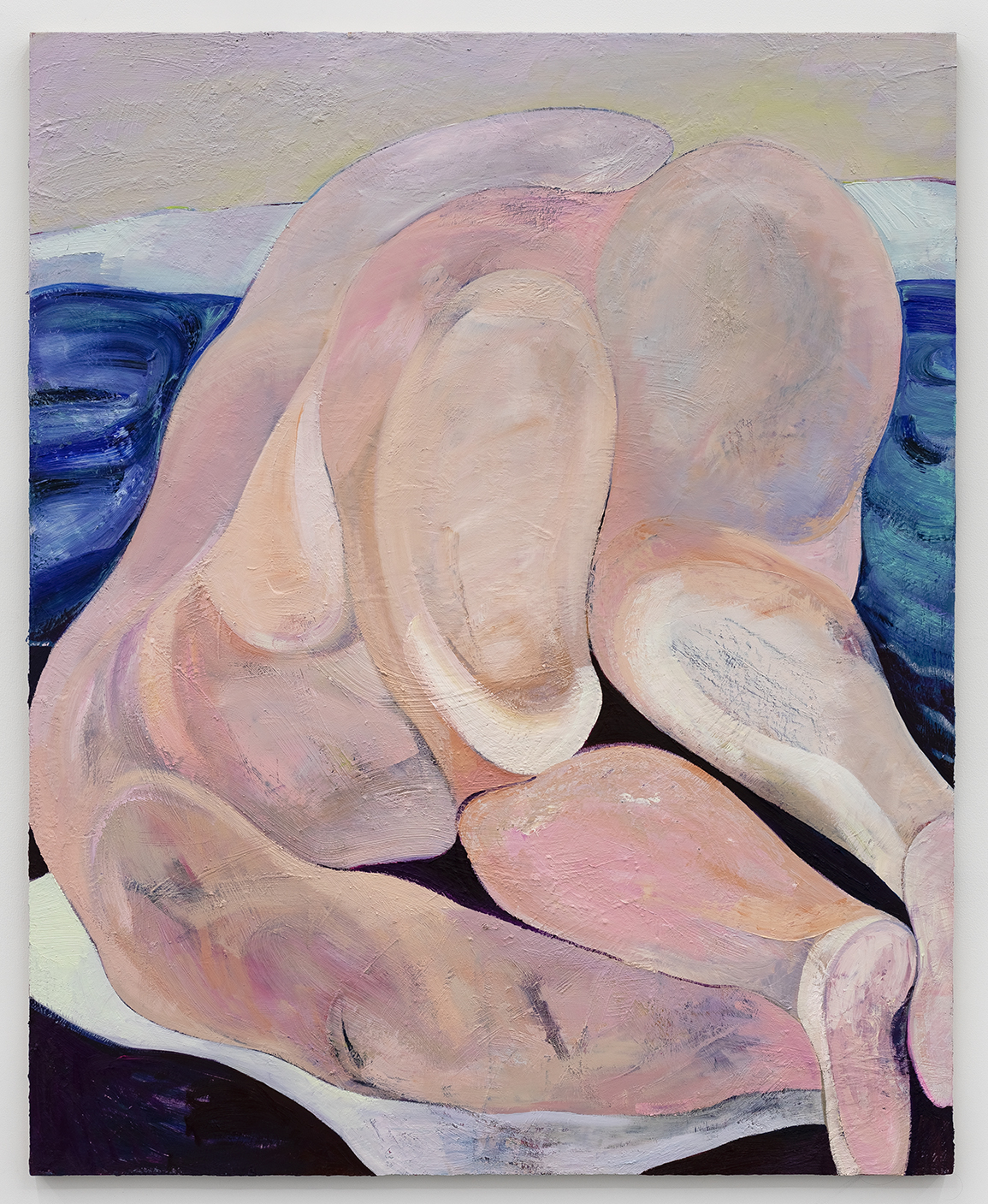
ZHANG Zipiao
"Position 02"
2019
Oil on canvas
162×131.5 cm
In Liu Shiyuan’s “It’s Nice to See You,” she intends to redefine the interpretations of several objects through poetry. She found that in daily life, the discussion of many topics is often bound by the prescribed semantics and interpretation. In this case, can different people’s understanding of a thing be regulated by the same text? If so, are the emotions and feelings generated by people based on different cultural contexts and life experiences eliminated in the monotonous explanations? So where is the freedom and limitation of each individual to understand and explain things? By re-examining the inherent interpretation of things, the artist combines his work with an encyclopedia-style display and poetic interpretation, which suggests the complexity of things. As for her video work “Isolated Above, Connected Down,” it records the trivial dialogue between a couple at the dining table. The content of this dialogue directly points to the complicated natural scenes that appear at the beginning and end of the film, suggesting that crisis sometimes is hiding behind our daily life and free chat.
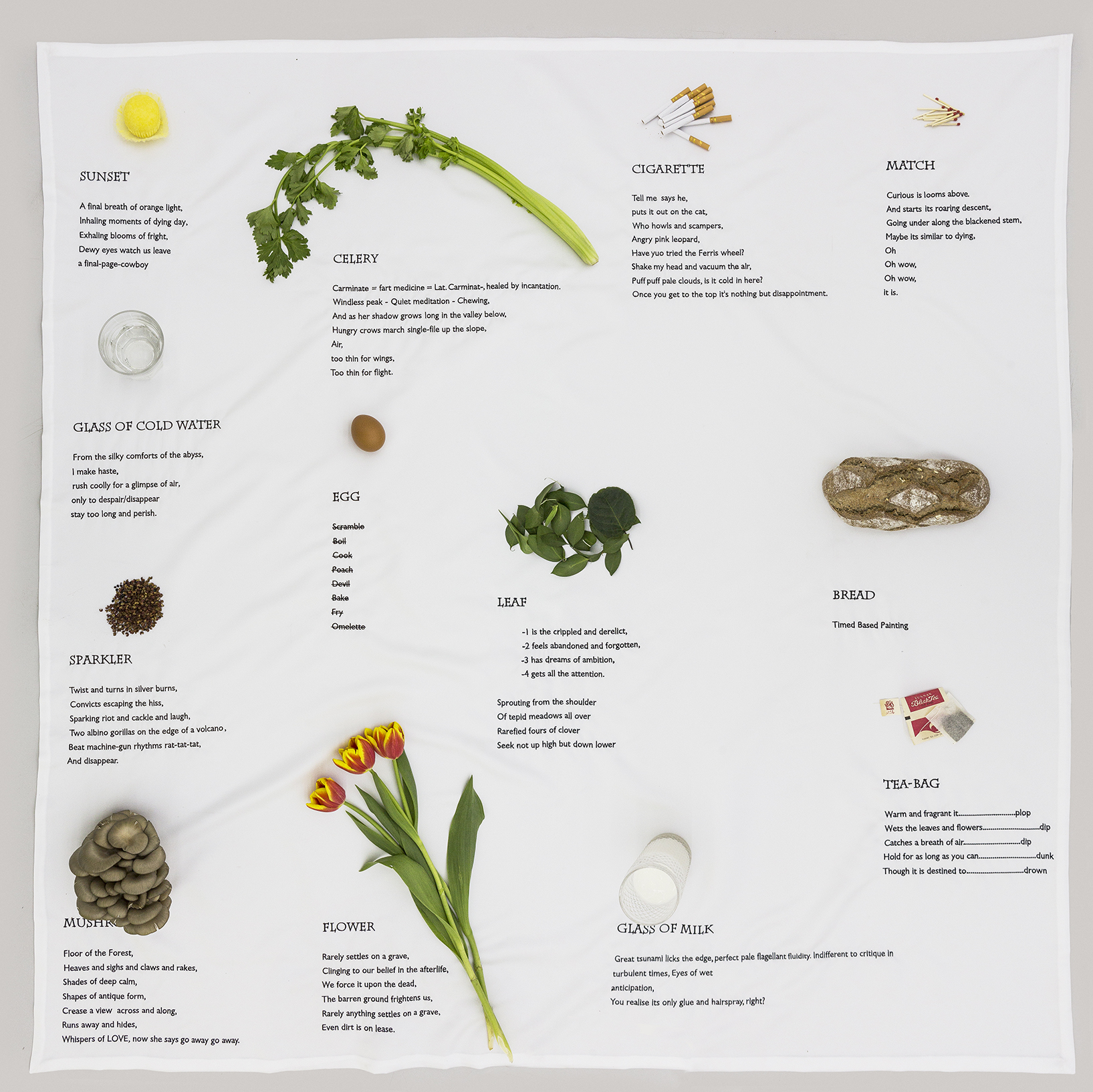
LIU Shiyuan
"It's Nice to See You"
2017
Sewing and mixed media on polyester
150×150 cm
By reflecting on the established concepts and identities in everyday life, artists question objects and events that have been “labeled” and “symbolised.” Whether it is the work and oppression that people have been accustomed to in social labor production, or the so-called successful learning and ideal life constructed by a certain class, or the status and position of women in society and family, or even a topic that is occasionally mentioned, the inherent concepts and interpretations usually create the dilemma of thinking, artists are expected to keep questioning. Overcoming “habituation” can often usher in reversal and transcendence.
Climax: Reversal and Transcendence
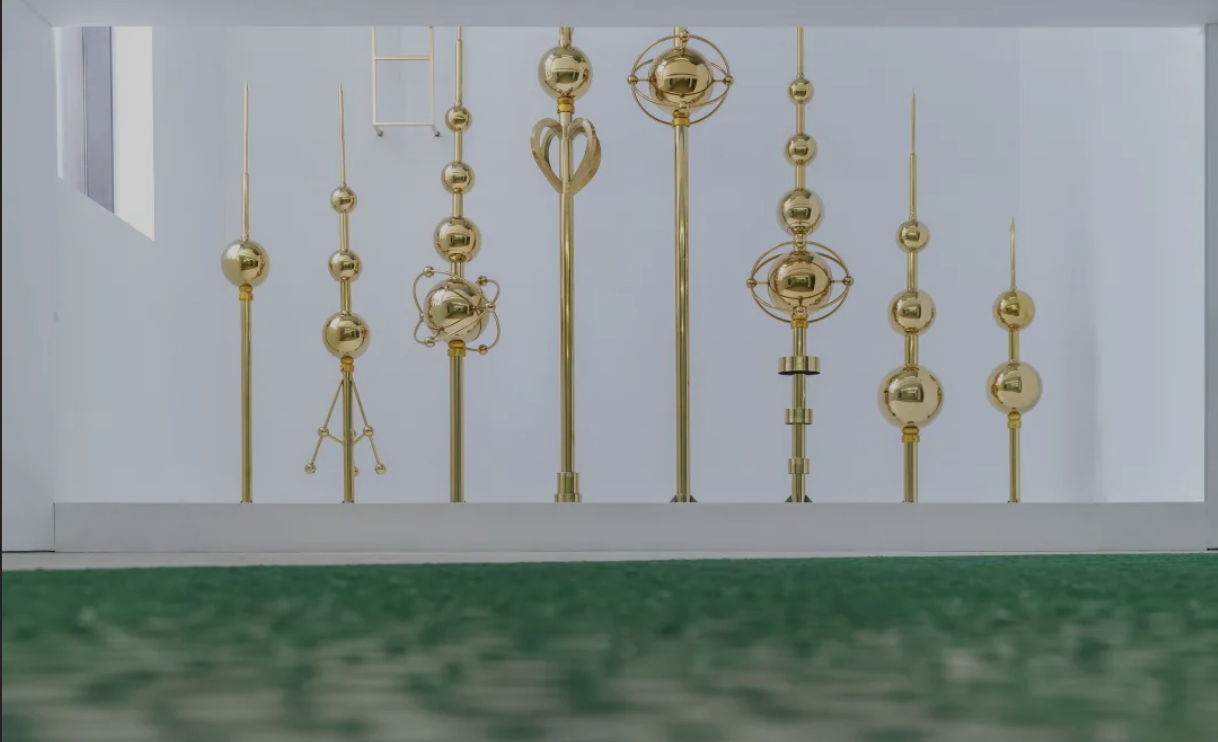
Exhibition View
In addition to the well-known “Plate Project” and “Lemon Series” as well as the symbolic identity behind the works, artist He Xiangyu presents another video work “Secret Pattern” in this exhibition. From the perspective of recording surroundings to being behind the screen that is hit by water drops, He Xiangyu manipulates and adjusts the moving images to realise the visual effect caused by perspective shifts between the third person pronoun and the first person. The audience watching through the screen will inadvertently feel the sudden and violent impact of the water drops and the picture will constantly change and re-organise under the beat of the water drop. The audience, as the main body of viewing, would encounter various situations from seemingly controlling all the environment to facing unexpected shocks. By doing so, the artist hints at the unpredictability of the crisis.
Yang Jian’s “An die Freude” designs the length of the lightning rods according to the pitch of the two main melodies of the “An die Freude.” The artist references the mainstream idea from scientists that lightning plays an extremely important role in creating life. Lightning descends from the sky and in such a seemingly catastrophic crisis, new vitality is born. A ladder that should be based on the soil stands in the air and it seems to directly connect with the clouds. On the contrary, the lightning rod that should be standing in the air is placed at a low place. Perhaps the way to perceive the truth is right behind the conflict.
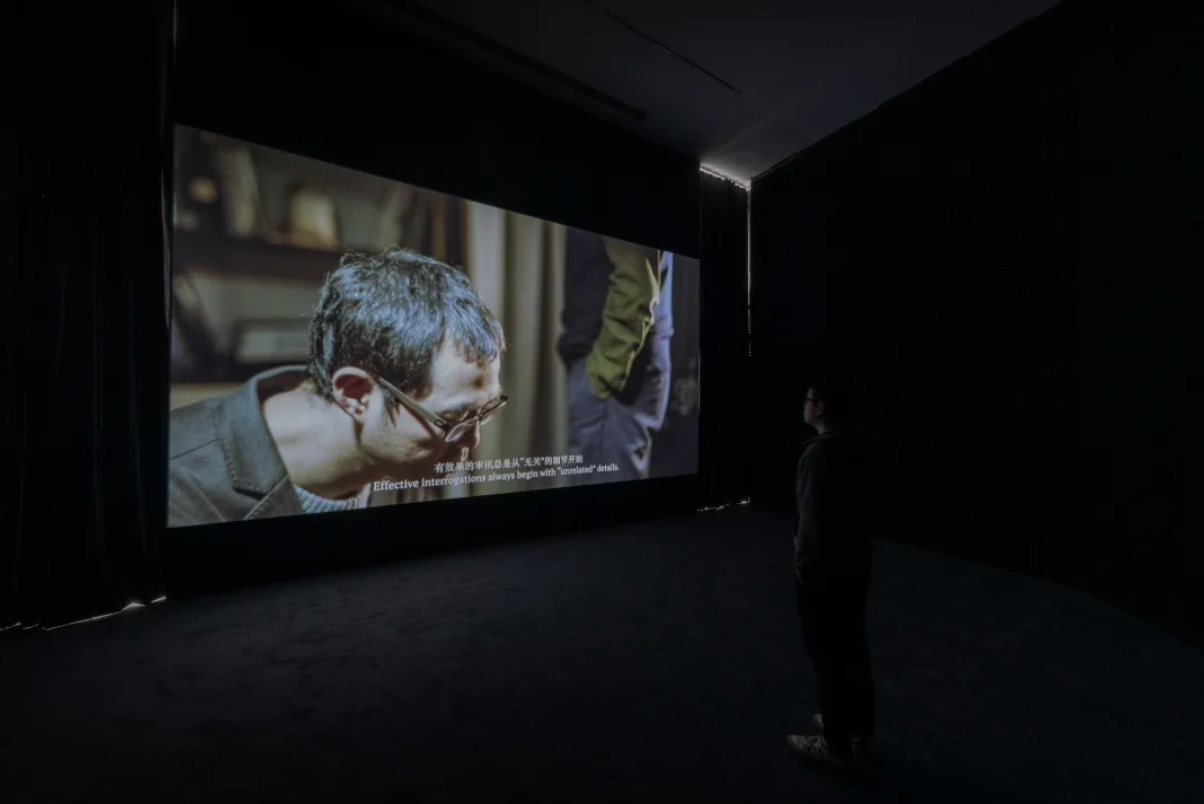
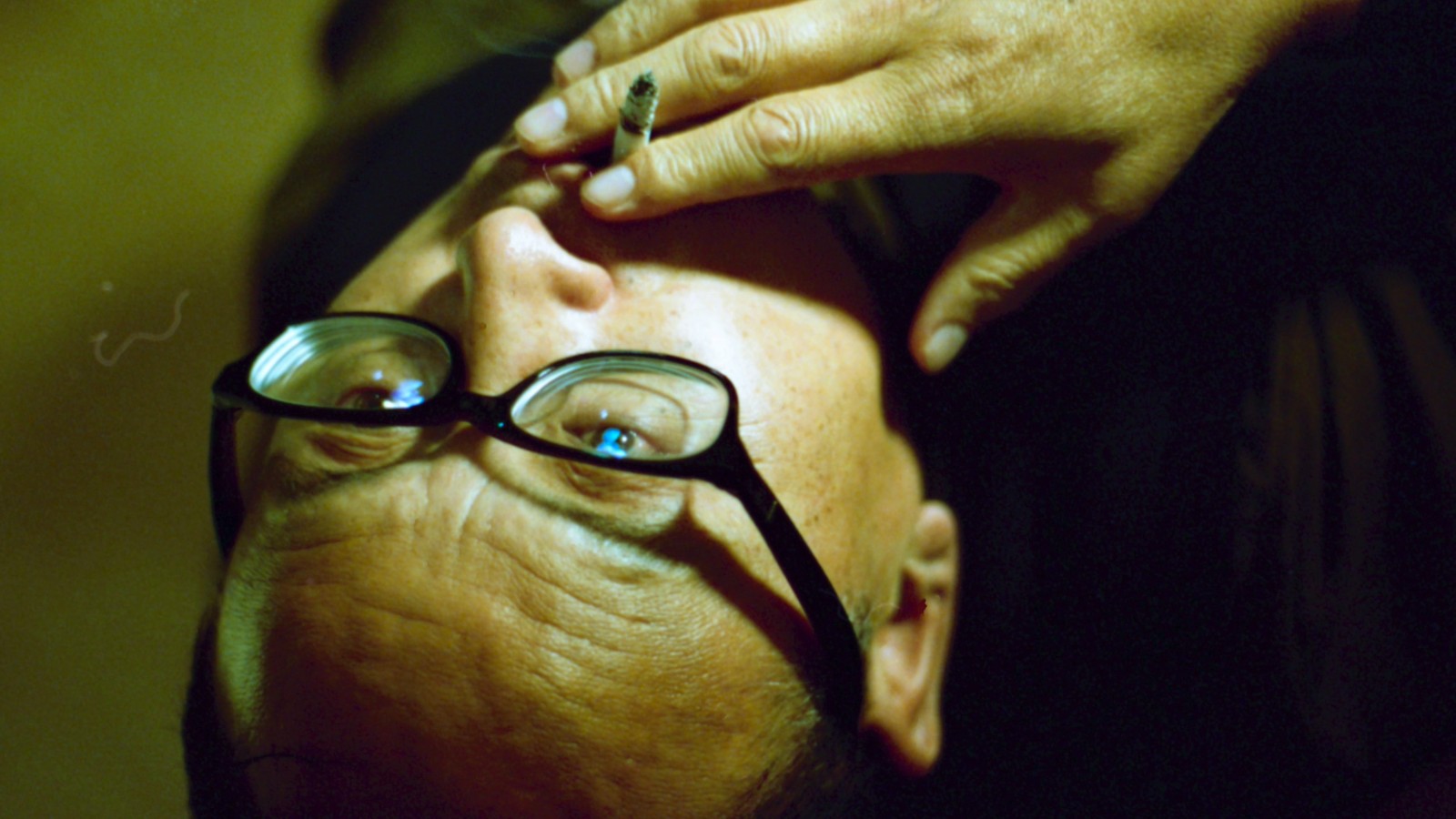
WANG Tuo
"The Interrogation"
2017
Single channel HD video (color, sound)
18'35"
In “The Interrogation,” artist Wang Tuo presents a reversed plot of identity shift in the form of a still frame, voiceovers and a two-line narrative. In the first story, an officer from the Commission for Discipline Inspection gradually applies the psychological tricks that he had used to succeed at his job interview, to the interrogation work in the future, the one who is under interrogation subtly seized the initiative and became the “interrogator.” And the second storyline is drawn from Ingmar Bergman’s film “Persona” (1966). It tells the story of an actress refusing to speak and a nurse trying to make her talk. Gradually, the two switch roles and turn into each other. In the process of a long companionship, the nurse ends up “like a disk that emptied all the data” and falls into silence. Through the film, on one side is a familiar real situation, on the other is the push for the development of the story to the extreme. The two are intertwined in a series of voiceovers. Characters in the film are faced with the replacement of the situation and the dynamic images composed of still frames require the audience to actively add more details in their minds to push the narrative to the critical point of reversal.
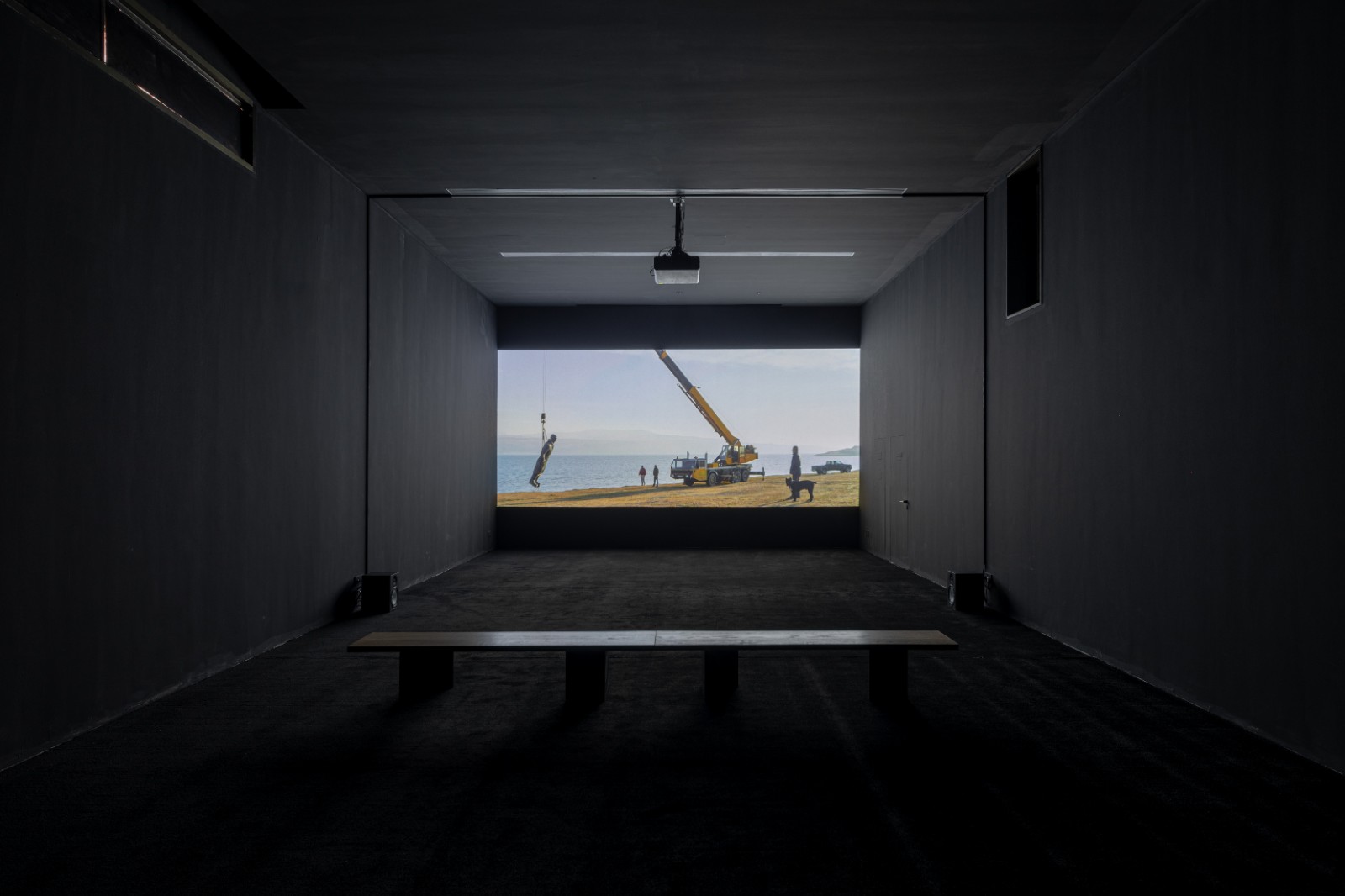
Vajiko CHACHKHIANI
"Winter Which Was Not There"
2017
Single channel HD video(color, sound)
10'40"
When returning to oneself from the external environment, all identity transformation and plot reversal seem to be attributed to self-reflection and cognition. Vajiko Chachkhiani’s video work “Winter Which Was Not There” tells of a man who saw a figure sculpture resembling a hero's monument picked up in the sea. He later found himself amazingly matching the face of the sculpture. The man dragged the car along the road and the sculpture gradually shattered under violent friction with the ground. The artist seems to be metaphorising the liberation of the individual from his or her own history through the film. However, he is puzzled by the fact that if one can truly surpass his or her past historical experience to achieve true freedom. Doesn’t the history, culture, experience, and environment that nurtured the individual’s growth shape the individual’s appearance and the way to communicate with the world? How do the public and private spheres surrounding individuals interfere with human consciousness? [3] When we try to abandon the marks and dilemmas brought to us in the past to pursue absolute emancipation and freedom, we are actually confronted with ourselves and returning to ourselves again.
Epilogue: “Seeing” the Return of Life
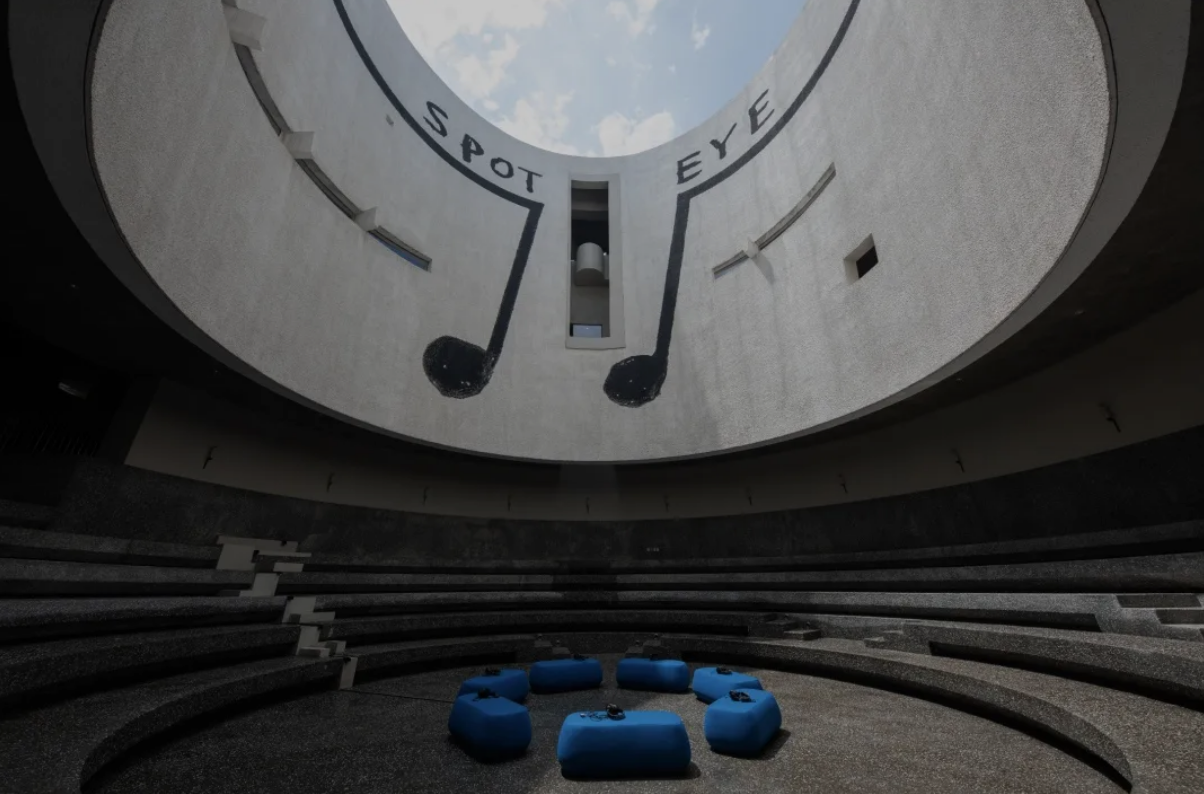
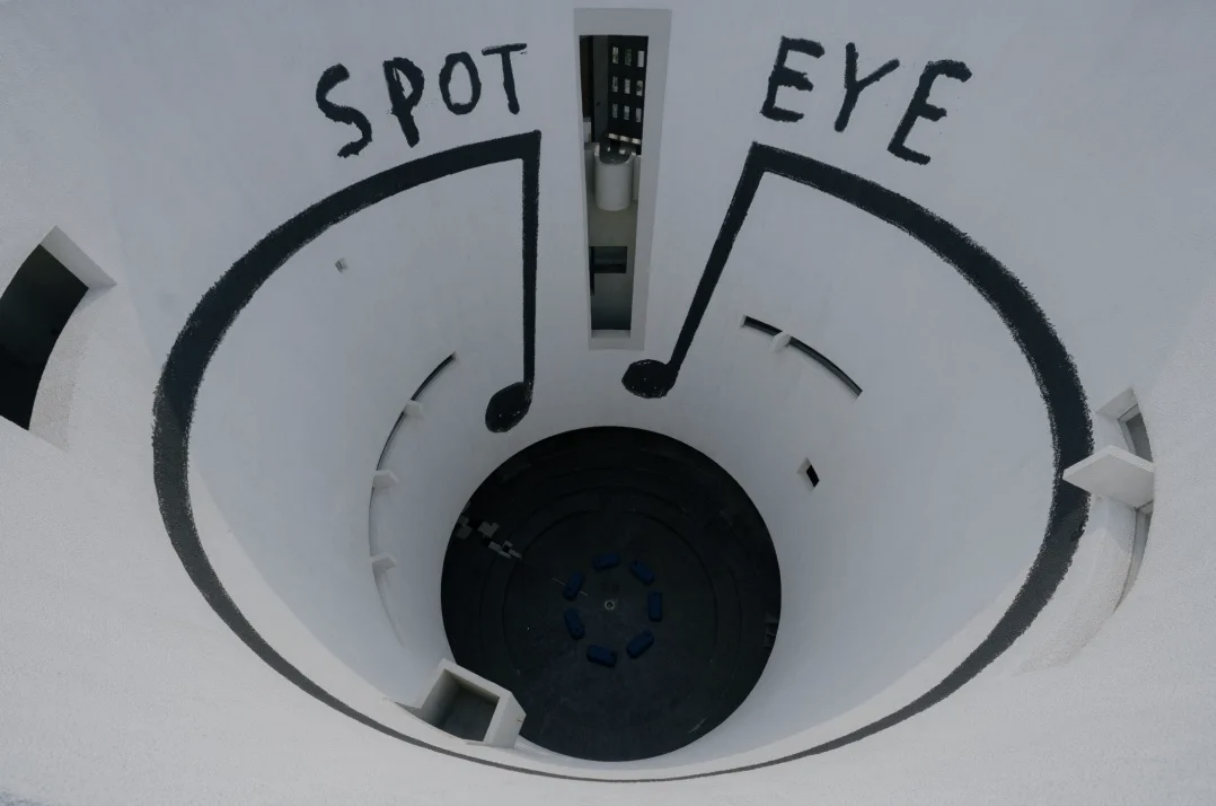
Exhibition View
The exhibition ends with Christine Sun KIM’s two sets of works at the bottom of the architecture. Although these two works are located in the last exhibition hall on the ground floor, thanks to the spiral architectural structure and the huge volume of work, the audience can experience the two groups of works on each floor from different perspectives. Artist Kim is congenitally impaired with a hearing loss but her artistic creation has always been deeply connected with sound. The huge mural “Eye Spot” surrounds the inner side of the building. “Eye spot” is the American Sign Language (ASL), which is equivalent to “I see” in English. It is a work that Kim tells her newborn daughter Roux about the rhythm and posture for experiencing life. When the audience surrounds the entire art space from bottom to top and then to the ground floor, “Eye Spot” has always been accompanied by people strolling, discovering, understanding, and thinking. “One Week of Lullabies for Roux” is a set of conceptual lullabies that Kim invited artist friends to write for her daughter. Kim started thinking about how to raise a child with normal hearing after her daughter was born and what kind of hearing experience should be given to the child? She also considered what sensory and emotional feedback this auditory experience can bring. The audience can sit quietly in the space of the ring-shaped theatre, put on the headphones and feel the repeated snoring or a slight chant. With “Eye Spot” surrounds at the top of the line of sight, the entire space is empowered with a mysterious and quiet atmosphere.
When I cannot hear the sounds of the world, I look forward to teaching you to slowly perceive the rhythm and pace of the time while experiencing life. Although my understanding of the world stems from text and vision, I hope you can hear the “lullaby” that touches both your body and mind. This is probably the tenderness of a mother towards her newborn, the curiosity of the new born and the first recognition of the world. At this moment, these two pieces of work present the comfort and care of life for each other.
The exhibition ends here. In fact, the concepts of “Basic” and “Repeat” behind the term “Etude” are linked together as a clue within the unique architectural form of the Aranya Art Center. However, basic and repetitive actions present only the first step for artists to start exploring and tracing. The symbols, contexts, and identities spawned behind their works are above the starting point, based on the individual’s different life experiences and historical and cultural backgrounds, which point to unlimited changes and potential growth. It should be said that in addition to the role of clues, “Etude” provides an initial platform for the development of different stories and the interpretation of the various world views. “Etude” is training day after day, is thinking through trouble, is a constant reflection on self and environment, and is transcending and returning.
When we once again revisit Cage’s Etudes Australes, we can understand that Cage’s statement that the group of compositions do not rely on the notion of harmony, but allows the harmonious to integrate with the dissonant. It is weird, difficult and deviant. How could it be expressed in political terms? “It would permit that attitude to be expressed socially. It would permit institutions or organisations, groups of people, to join together in a world which was not nationally divided.”[4] At the Wittner New Chamber Musical Festival in 1982, pianist Grete Sultan performed Etudes Australes for the first time in its entirety. At that point, “the practicality of the impossible” was broken, Cage’s idealised political declaration seemed to have an outlet and unsolved problems will eventually reach a turning point. Cage’s creative attempts and the manifesto behind it can still provide inspirations for today’s artistic creation and thinking—the dilemma and chaos faced by individuals will eventually connect with nature and society in which everyone participates. When repetitive training, inherent thinking and knowledge and the life and creation are heading to the critical point of “unsolved,” how should individual artists face self-examination and find an exit in fatigue, and thus to realise transcendence? Probably as Cage said: “…to affirm this life, not to bring order out of chaos, nor to suggest improvements in creation, but simply to wake up to the very life we’re living…”[5]
Notes:
[1] J. Pritchett, The Music of John Cage, Cambridge University Press, 1993, P198.
[2] Exhibition Text.
[3] Edited from Winter which was not there | Vajiko Chachkiani at Crawford Art Gallery, Cork
Source: https://visualartists.ie/events/winter-which-was-not-there-vajiko-chachkiani-at-crawford-art-gallery-cork/
Accessed on May 26, 2020.
[4] Edited from Richard Kostelanetz, Conversing with Cage, Rutledge, 2003, P90.
[5] John Cage, Silence: Lectures and Writings, Wesleyan University Press,1973,P95.
(Some of the descriptions of artworks referenced from Exhibition Text.)
Text by Emily Weimeng Zhou
Edited by Sue/CAFA ART INFO
Image Courtesy of WHITE SPACE BEIJING.
Photo Credit Zaiye Studio (在野照物所)
About the Exhibition:
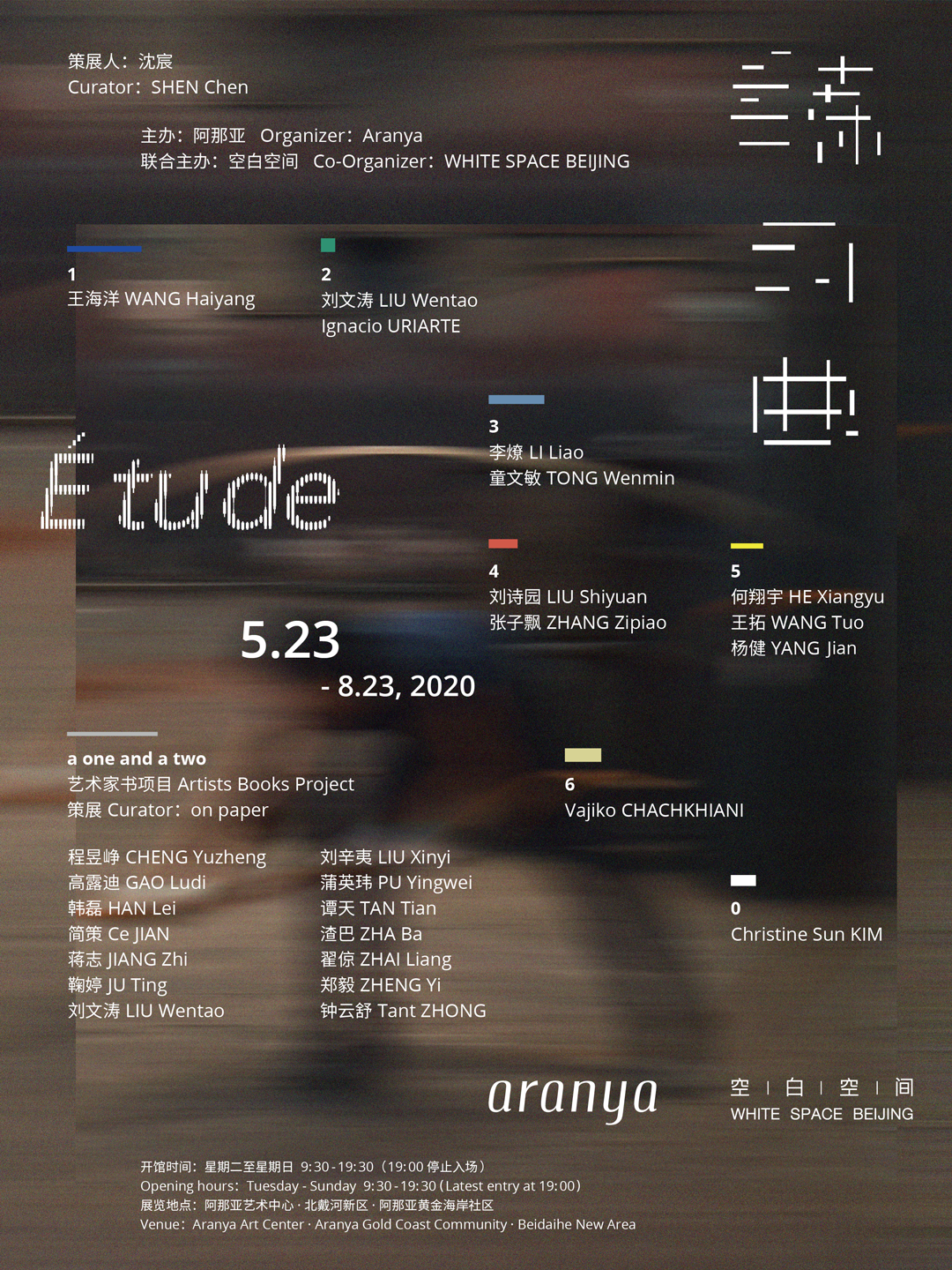 Étude
Étude
5.23-8.23, 2020
Venue: Aranya Art Center
Artists: Vajiko CHACHKHIANI, HE Xiangyu, Christine Sun KIM, LI Liao, LIU Shiyuan, LIU Wentao, TONG Wenmin, Ignacio URIARTE, WANG Haiyang, WANG Tuo, YANG Jian, ZHANG Zipiao
Curator: SHEN Chen
Organiser: Aranya Art Center
Co-Organiser: WHITE SPACE BEIJING
Special Project: “a one and a two - Artists Books Project”
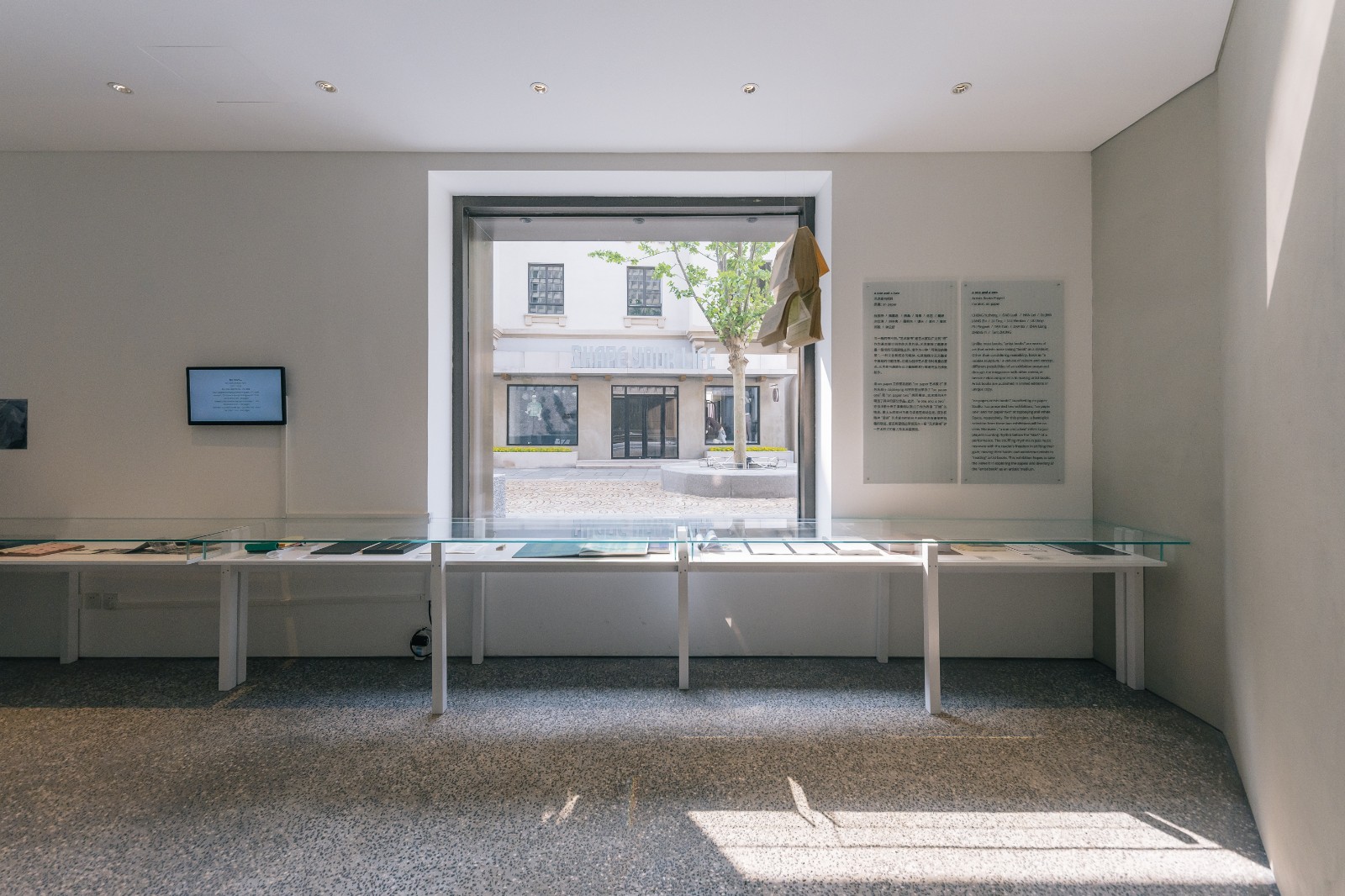 Along with the exhibition “Étude,” “a one and a two - Artists Books Project” curated on paper, is presenting artist books from CHENG Yuzheng, GAO Ludi, HAN Lei, Ce JIAN, JIANG Zhi, JU Ting, LIU Wentao, LIU Xinyi, PU Yingwei, TAN Tian, ZHA Ba, ZHAI Liang, ZHENG Yi, Tant ZHONG.
Along with the exhibition “Étude,” “a one and a two - Artists Books Project” curated on paper, is presenting artist books from CHENG Yuzheng, GAO Ludi, HAN Lei, Ce JIAN, JIANG Zhi, JU Ting, LIU Wentao, LIU Xinyi, PU Yingwei, TAN Tian, ZHA Ba, ZHAI Liang, ZHENG Yi, Tant ZHONG.


